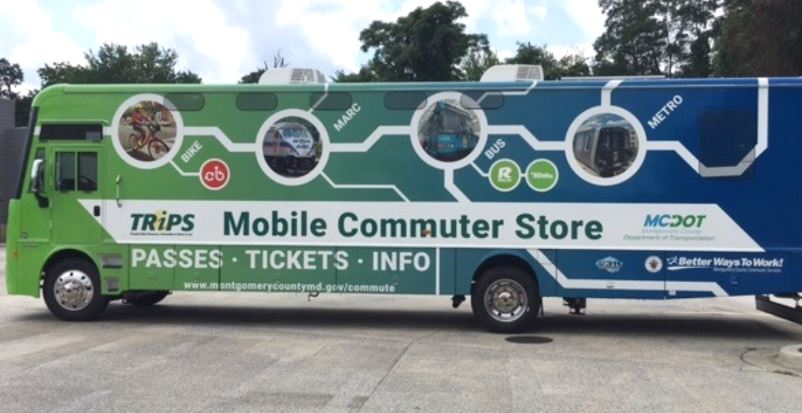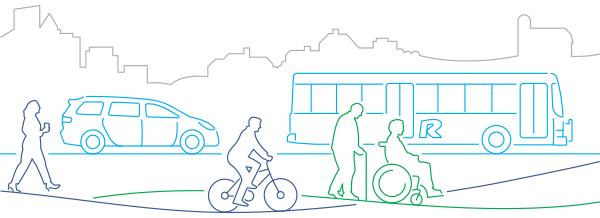Commuter Services promotes Better Ways to Work with a variety of incentives and tools to help make our roads less crowded while providing reliable transportation alternatives. For more information please click on the icons below .
Commuter Survey – Background Summary
MCDOT’s Commuter Services Section conducts a survey of commuters in many areas of the County, typically on a biennial schedule (every other year). The survey is focused on the County’s six Transportation Management Districts (TMDs) – Bethesda, North Bethesda, Silver Spring, Friendship Heights, Greater Shady Grove, and White Oak – but also is conducted at other major employment sites in the County, and among employees in County government. The survey asks “commuters” -- employees who travel to worksites in Montgomery County, and County residents living in multi-unit buildings in the TMDs -- about their daily trip to work. The analysis looks at the various “travel modes” (solo driving, carpool, vanpool, rail, bus, bicycle, walking, telework and other non-auto modes) that commuters use to get to their destination during the morning rush hours – the “peak period” – 7 am to 9 am weekdays. Note that telework is categorized as a non-auto “travel” mode, along with compressed days off for those with alternative work schedules, consistent with practice in the industry and the region.One of the County’s key transportation metrics for our efforts to reduce traffic congestion, improve air quality, and achieve our climate and community planning goals is the “Non-Auto Driver Mode Share” (NADMS). NADMS is the percentage of peak-period commuter trips made using an “alternative mode” – a mode other than driving alone in a single occupant vehicle. The County’s six TMDs, and most of the County’s Transportation Policy Areas, have NADMS goals adopted by County Council in master plans and the County’s Growth and Infrastructure Policy. Several areas also now have “blended” employee and resident NADMS goals, consisting of a combination of the percentages of employees working in that area and residents living in that area who use alternative modes to get to work. Progress toward achieving the NADMS goals reflects many factors, including development patterns; the County’s ongoing efforts to expand transit, pedestrian and bicycle infrastructure, and other multi-modal transportation options; and outreach efforts to ensure employees, employers and residents understand and know how to use the wide range of alternative mode options available.
The tables below are the summary results of the last three surveys, including the FY23 survey conducted in the Fall of calendar 2022. There was a longer period between the time of this most-recent survey and the prior one in FY20 due to the impacts of the Covid-19 pandemic. During the pandemic travel patterns were considered to be atypical, so the survey was postponed until those patterns were beginning to be more normalized. Nevertheless, the large increase in telework resulting from the pandemic continued to some extent during FY23 and is reflected in the NADMS results. We anticipate there may be a decline in the NADMS percentages in the next survey period, planned for FY25, as more employees return to at least partial on-site work. For more information on the survey please contact commuter.services@montgomerycountymd.gov.



















